Shallow reservoir behind Sanjay Gandhi National Park, filled with filthy water from BMC sewage lines, is where around 4,000 clothes are washed every day, including linen from hospitals
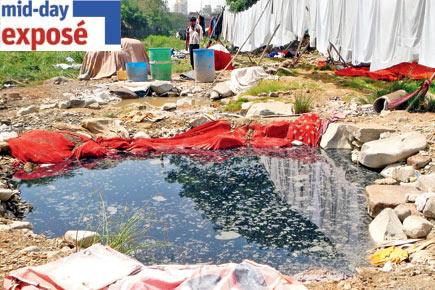
 The next time you lift up a seemingly clean napkin to wipe your lips at a restaurant or cover an ailing loved one with a sheet at a hospital, pause to think. For, the linen could have been washed in sewer water. This horrifying fact, with its worrisome health implications, was discovered by mid-day when we visited a makeshift shallow reservoir behind the Sanjay Gandhi National Park.
The next time you lift up a seemingly clean napkin to wipe your lips at a restaurant or cover an ailing loved one with a sheet at a hospital, pause to think. For, the linen could have been washed in sewer water. This horrifying fact, with its worrisome health implications, was discovered by mid-day when we visited a makeshift shallow reservoir behind the Sanjay Gandhi National Park.
ADVERTISEMENT
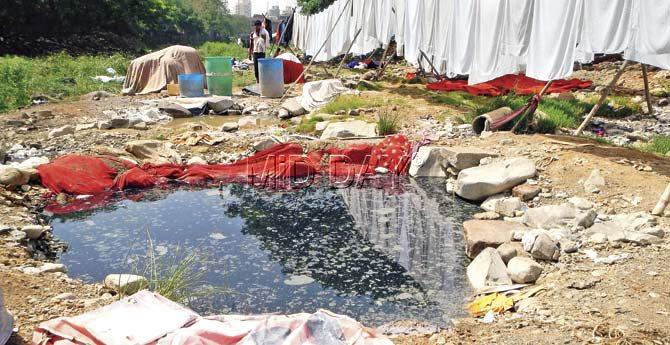
Since the water remains stagnant and is made worse with the repeated use of detergent and washing of possibly contaminated hospital linen, the tank could, literally, be a reservoir of disease. A dhobi displays the clothes from a hospital washed in the reservoir. Pics/Nimesh Dave
Barely 20 feet long and filled with murky, filthy, stagnant water from BMC sewage lines, the reservoir serves as an open-air laundry and over 4,000 clothes are washed there every day, including linen from hospitals and restaurants not only in and around Borivli, Kandivli and Dahisar, but also from places as far as Colaba.
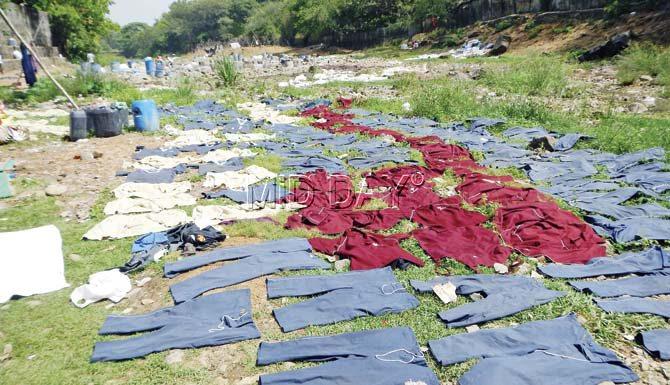
Since the water remains stagnant and is made worse with the repeated use of detergent and washing of possibly contaminated hospital linen, the tank could, literally, be a reservoir of disease.
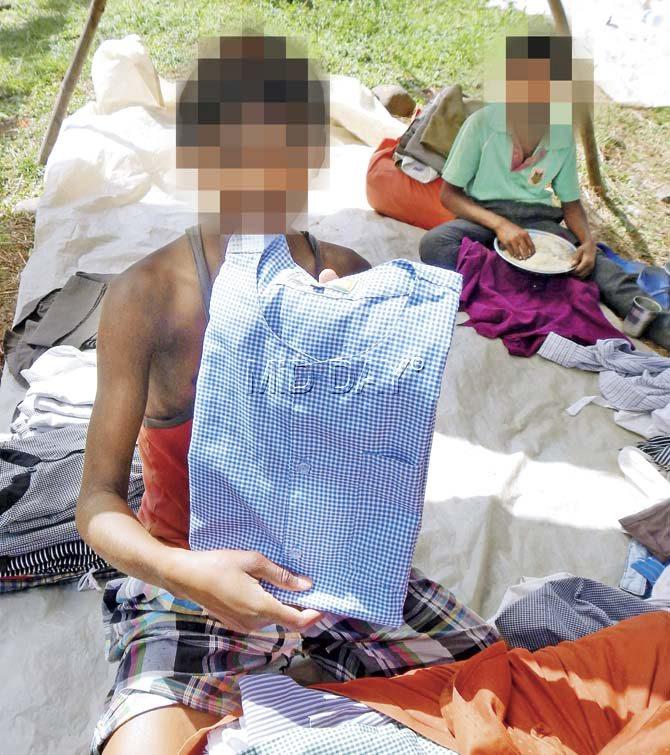
‘Cleaning’ process
mid-day observed that while the bigger bed sheets are washed in an automatic tumbler at a higher level, the used water flows, through a BMC sewage pipe, back into the already contaminated reservoir.
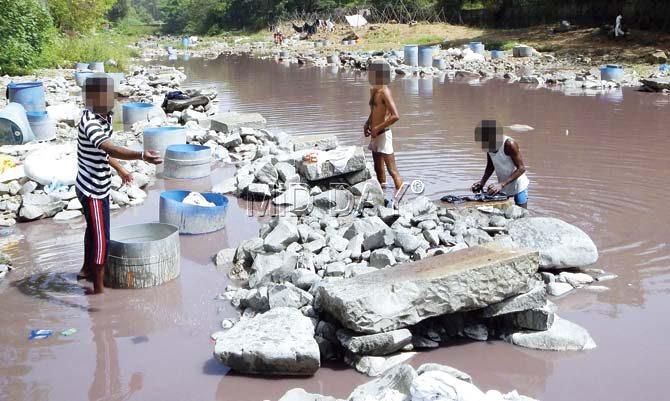
Workers said the entire Dhobi Ghat, as the spot is referred to by the locals, is virtually ruled by about 25 overlords, who approach high-end restaurants and hospitals with a proposal to clean their linen
Here, the smaller clothes and uniforms were being washed either by hand or by making teenage boys, clad only in their underwear, jump on them barefoot. ‘Fresh’ sewer water from the pipes also drains into the tank regularly.
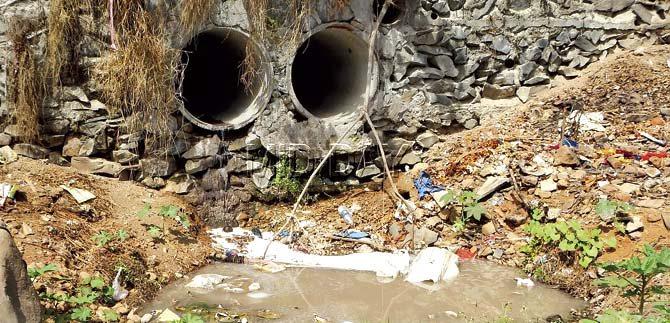
Sewer pipes above the reservoir
Fifty-five-year-old Prakash (name changed to protect identity), who has been washing clothes on the reservoir since he was 15, said that the entire Dhobi Ghat, as the spot is referred to by the locals, is virtually ruled by about 25 overlords, who approach high-end restaurants and hospitals with a proposal to clean their linen.
“They, in turn employ approximately 150 workers to wash the linen. Each washer gets R350-500, a couple of beedi packs and a nip of country liquor every day.” he said. Holding up a bagful of hospital linen, another worker alleged that he was aware of at least three hospitals and five restaurants between Kandivli and Dahisar, whose linen was washed by his team regularly.
“Each team has its fixed set of clients. Some clothes are sent here from as far as south Mumbai for washing” he said. While mid-day could not make out the exact hospitals the linen came from as they only had some ink markings, the logos of the restaurants were clearly visible on waiters’ uniforms and aprons worn by chefs, which had come for cleaning.
Official speak
When mid-day spoke to Kishore Gandhi, assistant municipal commissioner (R-Central ward), he confirmed that the Dhobi Ghat, which was near the mouth of the Dahisar River, got running water only during the monsoons and the water was contaminated with discharge from BMC sewage lines. “We are aware of the problem and it will only be solved once the Dahisar River is revived. The plan has already got the nod from the government and will be implemented soon,” he said.
 Subscribe today by clicking the link and stay updated with the latest news!" Click here!
Subscribe today by clicking the link and stay updated with the latest news!" Click here!






